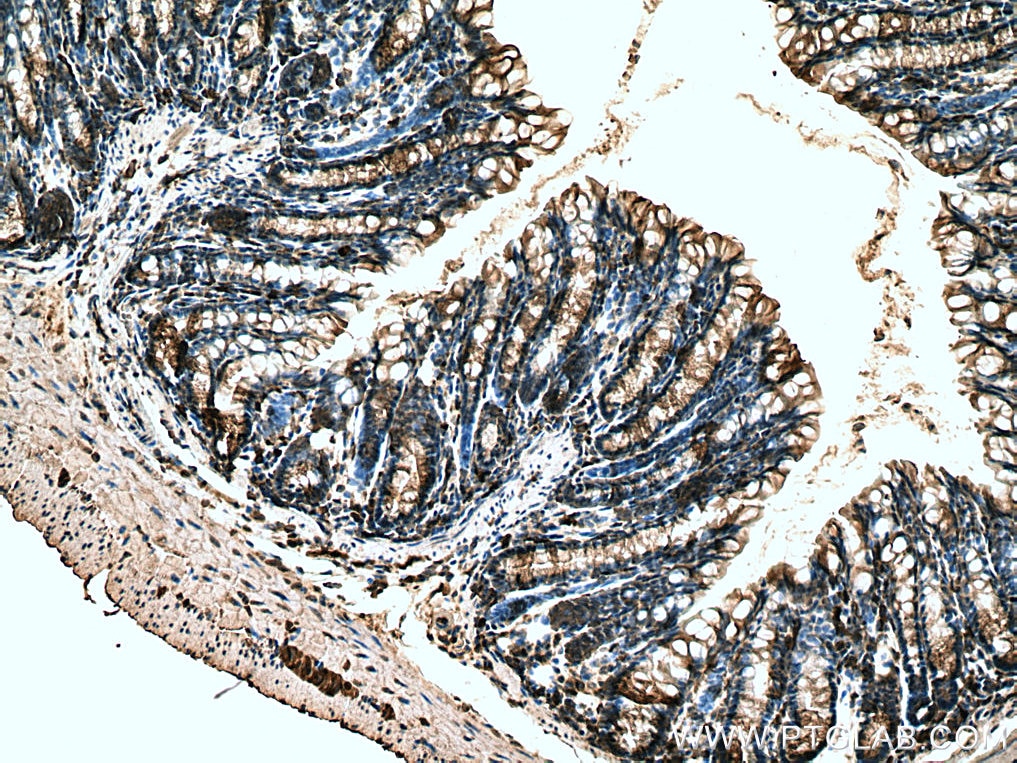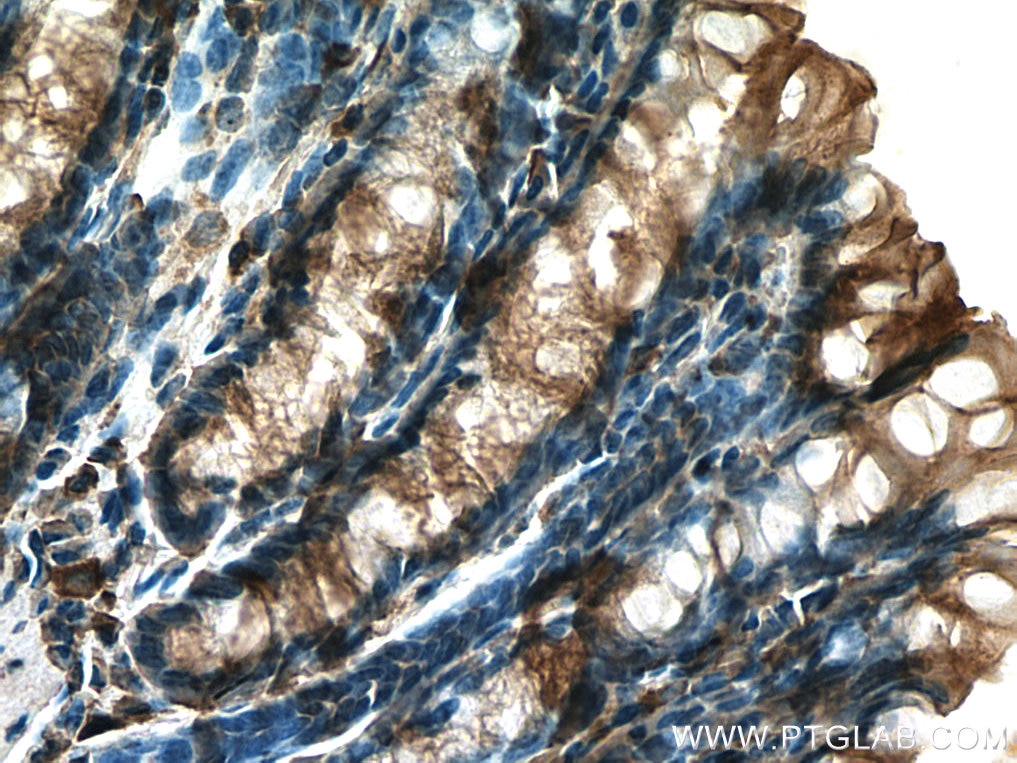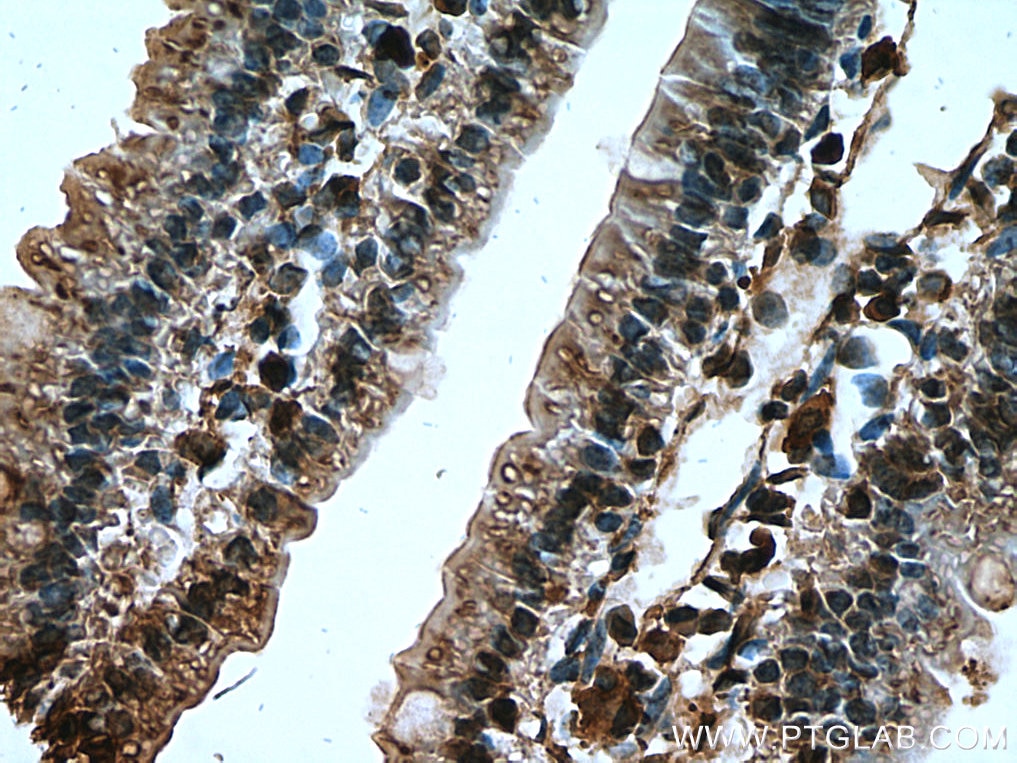- Phare
- Validé par KD/KO
Anticorps Polyclonal de lapin anti-TIGAR
TIGAR Polyclonal Antibody for WB, IHC, ELISA
Hôte / Isotype
Lapin / IgG
Réactivité testée
Humain, rat, souris
Applications
WB, IHC, ELISA
Conjugaison
Non conjugué
N° de cat : 22136-1-AP
Synonymes
Galerie de données de validation
Applications testées
| Résultats positifs en WB | tissu de muscle squelettique de souris, tissu de muscle squelettique de rat |
| Résultats positifs en IHC | tissu de côlon de souris, tissu d'intestin grêle de souris il est suggéré de démasquer l'antigène avec un tampon de TE buffer pH 9.0; (*) À défaut, 'le démasquage de l'antigène peut être 'effectué avec un tampon citrate pH 6,0. |
Dilution recommandée
| Application | Dilution |
|---|---|
| Western Blot (WB) | WB : 1:500-1:2000 |
| Immunohistochimie (IHC) | IHC : 1:50-1:500 |
| It is recommended that this reagent should be titrated in each testing system to obtain optimal results. | |
| Sample-dependent, check data in validation data gallery | |
Applications publiées
| KD/KO | See 1 publications below |
| WB | See 7 publications below |
Informations sur le produit
22136-1-AP cible TIGAR dans les applications de WB, IHC, ELISA et montre une réactivité avec des échantillons Humain, rat, souris
| Réactivité | Humain, rat, souris |
| Réactivité citée | Humain, souris |
| Hôte / Isotype | Lapin / IgG |
| Clonalité | Polyclonal |
| Type | Anticorps |
| Immunogène | TIGAR Protéine recombinante Ag17532 |
| Nom complet | chromosome 12 open reading frame 5 |
| Masse moléculaire calculée | 270 aa, 30 kDa |
| Poids moléculaire observé | 30 kDa |
| Numéro d’acquisition GenBank | BC012340 |
| Symbole du gène | TIGAR |
| Identification du gène (NCBI) | 57103 |
| Conjugaison | Non conjugué |
| Forme | Liquide |
| Méthode de purification | Purification par affinité contre l'antigène |
| Tampon de stockage | PBS with 0.02% sodium azide and 50% glycerol |
| Conditions de stockage | Stocker à -20°C. Stable pendant un an après l'expédition. L'aliquotage n'est pas nécessaire pour le stockage à -20oC Les 20ul contiennent 0,1% de BSA. |
Informations générales
The TP53-induced glycolysis and apoptosis regulator (TIGAR), first reported in 2006, is a downstream target gene of p53 and an important factor involved in glycolysis and apoptosis . It is indispensable in metabolism and is involved in metabolic syndrome, including hyperglycemia, insulin resistance, alcoholic fatty liver and tissue ischemia. TIGAR is highly expressed in many cancer cells to promote cell survival.
Protocole
| Product Specific Protocols | |
|---|---|
| WB protocol for TIGAR antibody 22136-1-AP | Download protocol |
| IHC protocol for TIGAR antibody 22136-1-AP | Download protocol |
| Standard Protocols | |
|---|---|
| Click here to view our Standard Protocols |
Publications
| Species | Application | Title |
|---|---|---|
Autophagy TIGAR exacerbates obesity by triggering LRRK2-mediated defects in macroautophagy and chaperone-mediated autophagy in adipocytes | ||
Free Radic Biol Med Oxidative stress-induced alterations in retinal glucose metabolism in Retinitis Pigmentosa. | ||
Neurobiol Dis Maternal Herpesviridae infection during pregnancy alters midbrain dopaminergic signatures in adult offspring. | ||
Cell Death Dis MiR-652-5p elevated glycolysis level by targeting TIGAR in T-cell acute lymphoblastic leukemia. | ||
Biochem Biophys Res Commun Cordycepin exhibits anti-fatigue effect via activating TIGAR/SIRT1/PGC-1α signaling pathway | ||
Phytother Res Dual targeting of wild-type p53 and gut microbiota by Magnolol represses key metabolic process and kills CRC cells |






